The best touring bikes will enable you to cover the miles in comfort and fully laden. Here are our top picks on the market, as reviewed by the BikeRadar test team.
Any bike can feasibly be used as a touring bike – gravel and adventure bikes, road bikes, flat-bar hybrid bikes, and even mountain bikes are all perfect candidates to be turned into a competent horizon-seeking touring wagon.
However, there are some distinct advantages offered by a traditional touring bike.
A comfortable and upright ride position, plentiful mounts to easily fit copious amounts of luggage, additional water bottle mounts, overbuilt framesets – most often made of easily repaired steel – and wide tyre clearances are all hallmarks of a good touring bike.
These features make them easy to live with on long expeditions.
Here, we've focused on more traditional touring bikes designed explicitly for long, slower-paced days in the saddle, loaded with panniers and luggage.
For more info, check out our buyer's guide to touring bikes at the bottom of this page.
Check out our standalone guide for a more in-depth look at what a touring bike is and how it compares to an adventure or bikepacking bike.
Best touring bikes in 2024, as rated by our expert testers
Genesis Tour de Fer 30

- £2,100 as tested
- Pros: great value-for-money build
- Cons: Relatively heavy, but that's to be expected for a tourer
A classic tourer with a Reynolds 725 steel frame and fork, front and rear racks, and mudguards, along with three bottle cages and three spare spokes, the Genesis Tour de Fer 30 comes ready to hit the road.
There's a triple-chainring Shimano Tiagra groupset and TRP Spyre mechanical disc brakes. You even get dynamo lighting. It's all specced for easy maintenance and reliability on high-mileage trips.
With a 15.6kg overall weight, the Tour de Fer 30 has stability and purpose, but still handles very well. It's good value for the spec level and included extras, and should give years of service.
Spa Cycles Wayfarer
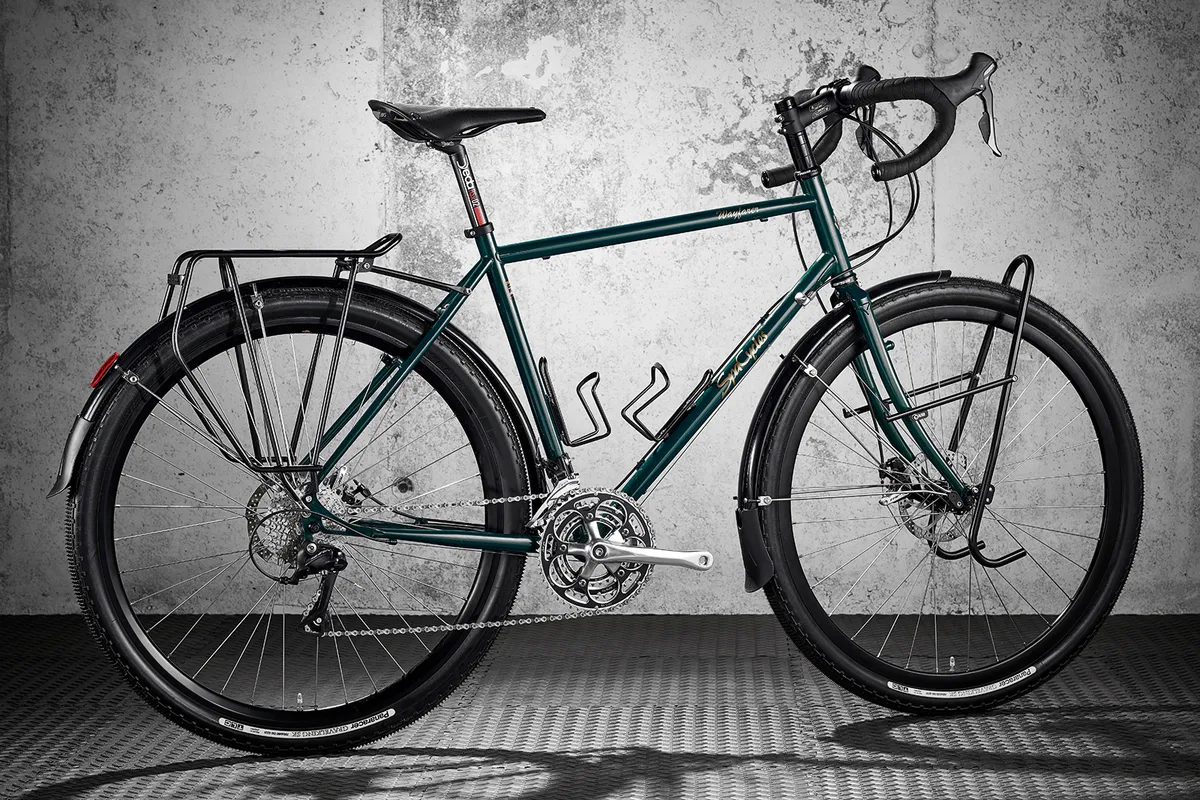
- £1,400 as tested
- Pros: Comfortable touring geometry; quality wheels and kit
- Cons: Tight clearances with wider tyres
Spa Cycles calls the Wayfarer "expedition focused". Its Reynolds 725 steel frame is well finished and it's equipped with a Shimano Sora 9-speed triple chainset with a 28x34t lowest gear. It rolls on hand-built tubeless-ready wheels with 50mm-wide Panaracer GravelKing or 32mm Schwalbe Marathon tyres.
There's a Brook Cambium saddle and FSA Wing bars with a nice shape. The only things our bike was lacking were dynamo lights and a kickstand, both of which you could add to the spec.
The Wayfarer is stable with an upright ride and excellent long-distance comfort, great for the commute and leisure rides, not just long-range touring.
Thorn Club Tour MK5
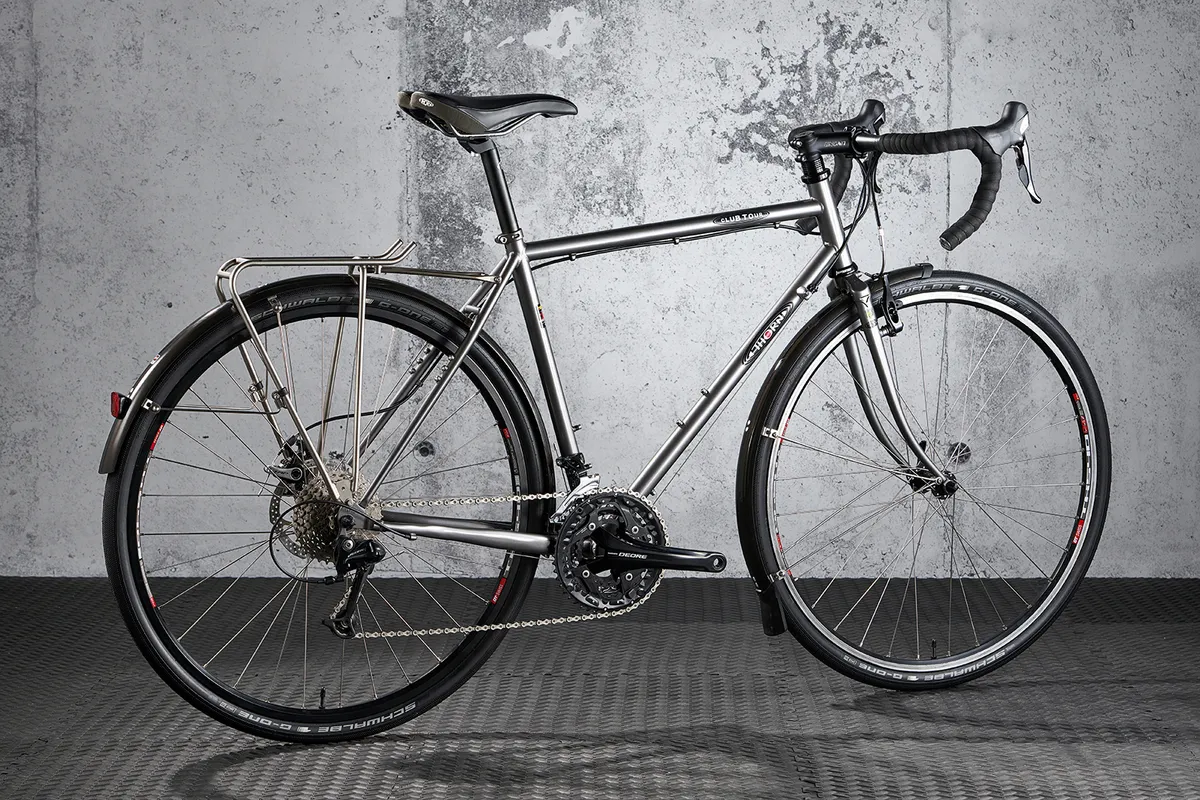
- £2,071 as tested
- Pros: High-quality, well-sourced and customisable build kits
- Cons: Unusual build, but this can be customised extensively
St John Street Cycles has been producing steel touring bikes for just about forever and its newest version of the Thorn Club Tour is its own unique take on a traditional touring bike.
Thorn offers near-endless customisation, allowing you to tailor the bike exactly to your needs and desires, as is well-illustrated by our test bike, mixing a V-brake fork on the front with a disc on the rear. The options are endless.
Fuji Touring Disc

- £1,100 / AU$1,999 as tested
- Pros: Everything you need from a touring bike straight out of the box
- Cons: Bar-end shifters take some learning and can be bashed with knees
The Fuji Touring Disc is ready for proper loaded expeditions straight out of the box, with a full suite of accessories and a sensible build at a very competitive price.
The Reynolds 520 frameset is TIG-welded to bring costs down, though a handsome cast crown on the fork gives the bike an air of classic looks.
The bar-end shifters are a sensible and hardy option that will stand up to the rigours of touring far better than an equivalently priced set of integrated shifters.
The extremely low 26×36t gear will also be very welcome if you’re climbing while loaded.
Oxford Bike Works Model 1E
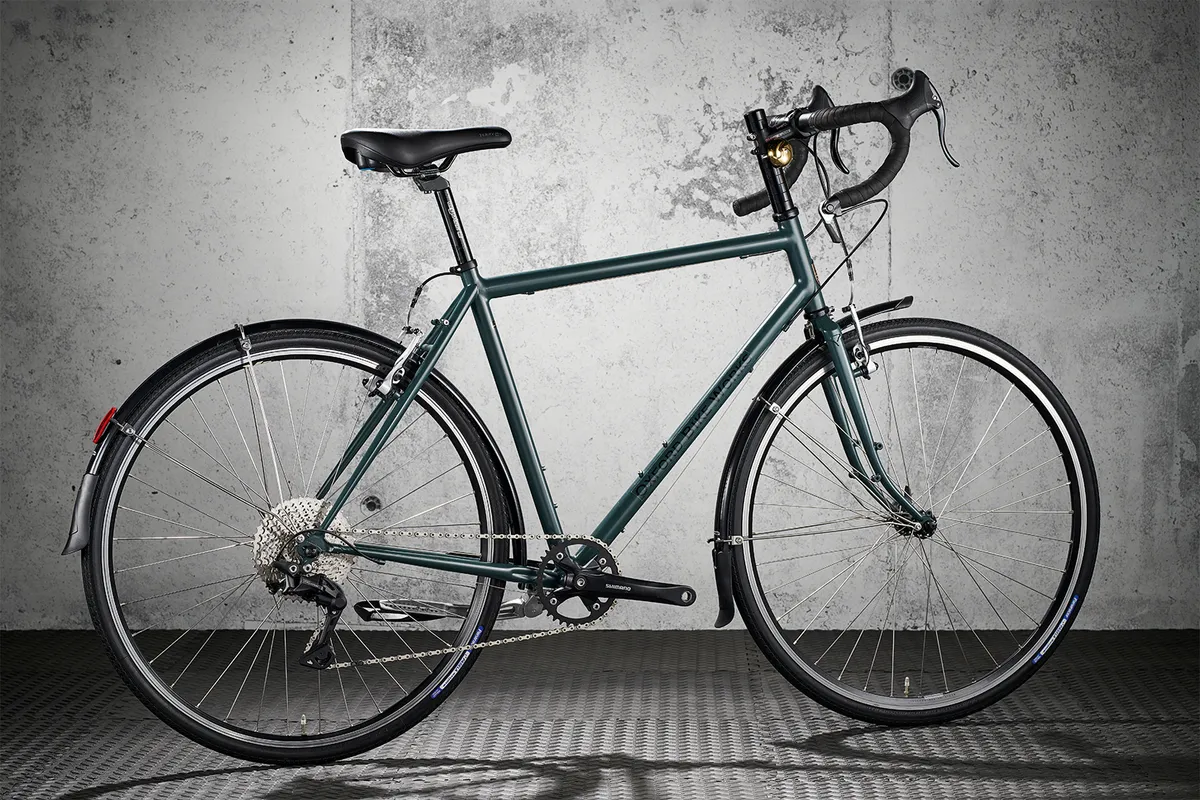
- £1,440 / $2,454 as tested
- Pros: Bespoke service and fitting
- Cons: Cheap decals feel out of place on a premium bike
The Oxford Bike Works Model 1E's classy-looking fillet brazed steel frame is made in England.
There's a Shimano Deore single-chainring groupset with a wide-range cassette, but it's operated by a bar-end shifter rather than an integrated brake/shift lever. V-brakes take care of stopping, although you can upgrade to discs if you prefer.
The bike rolls nicely on its 32mm tyres and is smooth and comfortable. There are mounts for racks and mudguards and Oxford Bike Works includes a free fit with your purchase and a one-year comfort guarantee, where it will swap out any contact points that you don't get on with.
Ridgeback Panorama

- £1,400 as tested
- Pros: Super wide-range, touring-friendly gearing
- Cons: Heavy even when unladen
Ridgeback’s Panorama features a highly reliable Reynolds 725 steel frame, which is matched with a Chromoly steel fork.
A triple (48/36/26t) Shimano chainset is paired with a wide-range 11-34t cassette, giving super-wide, loaded-climb-friendly gearing. In-line brake levers are also a rare and welcome addition to this bike.
The generous spec extends to the accessories, and the bike ships with three bottle cages, mudguards and a rear rack as stock.
Ridgeback Expedition

- £1,350 as tested
- Pros: Wide gear range; tough tyres
- Cons: Lacklustre braking performance; heavy
Rolling on 26in wheels, the Ridgeback Expedition is a great touring bike for far-flung expeditions.
While mechanical disc brakes lack the sheer power of hydraulic brakes, a full suite of useful accessories help makes up for these shortcomings.
Surly Bridge Club
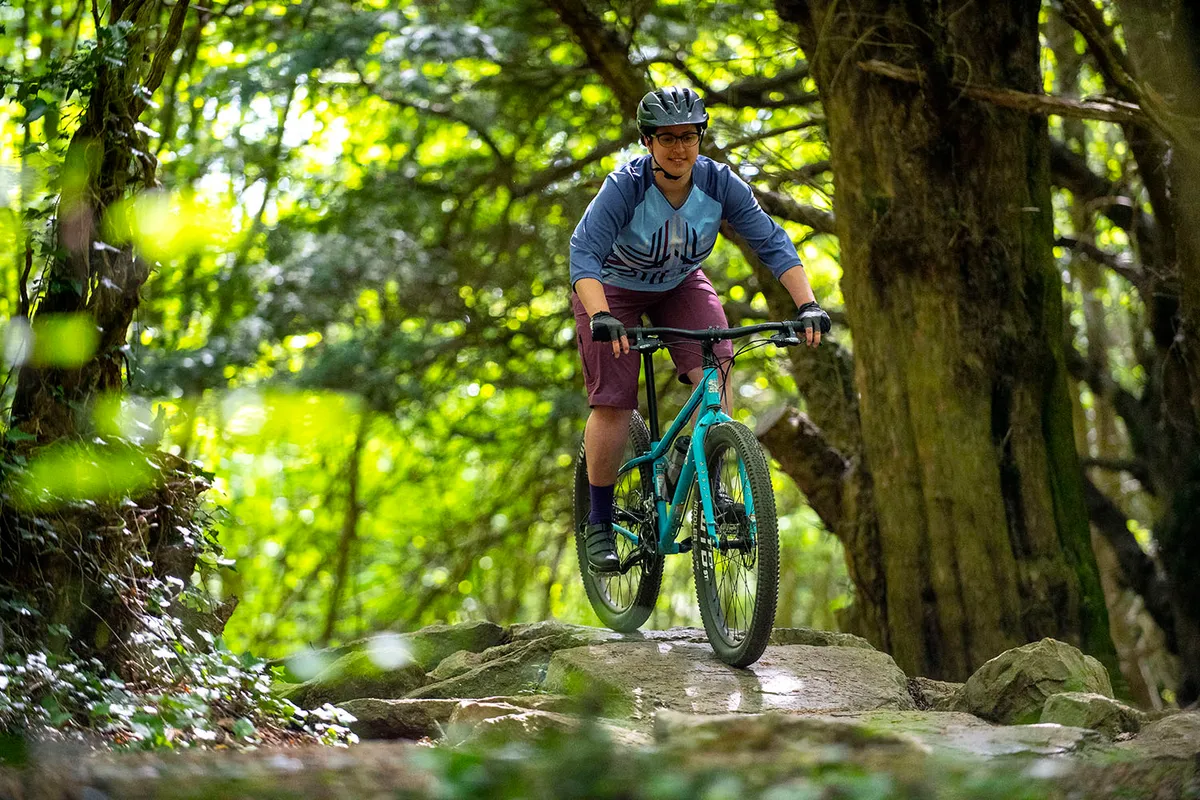
- £1,400 as tested
- Pros: Ultra-versatile frameset can be set up to do just about anything
- Cons: Smaller frame geometry restricts mounting options
The Bridge Club is an outlier in the group – while it may look more like an old-school mountain bike, Surly pitches it as an any-terrain touring bike, earning it a spot on this list.
Surly’s touring bike range is extremely broad, covering everything from the classic Long Haul Trucker all the way over to the ECR – a plus tyre’d do-anything shred wagon.
The Bridge Club sits in the middle of this spectrum, with all the usual braze-ons for the essentials covered without over-complicating things.
The Light Blue Darwin Two Way Street
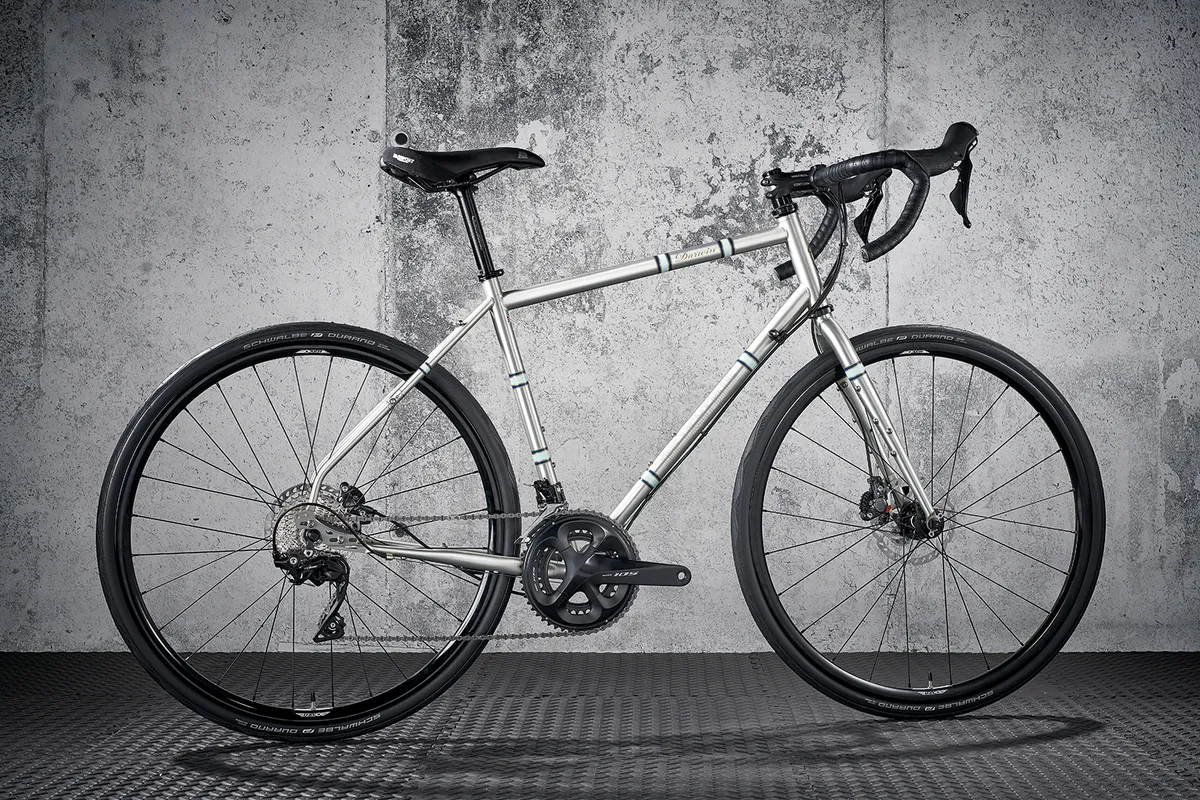
- £2,055 as tested
- Pros: Good all-rounder option
- Cons: Saddle will please few
The Light Blue pitches the Darwin as a lightweight 'street bike' that can comfortably handle commuting, gravel dalliances and even lightweight touring.
The bike is well-equipped, with sliding dropouts, a full range of rack and mudguard mounts, and compatibility with belt drivetrains.
Also consider…
Cinelli Hobootleg Easy Travel
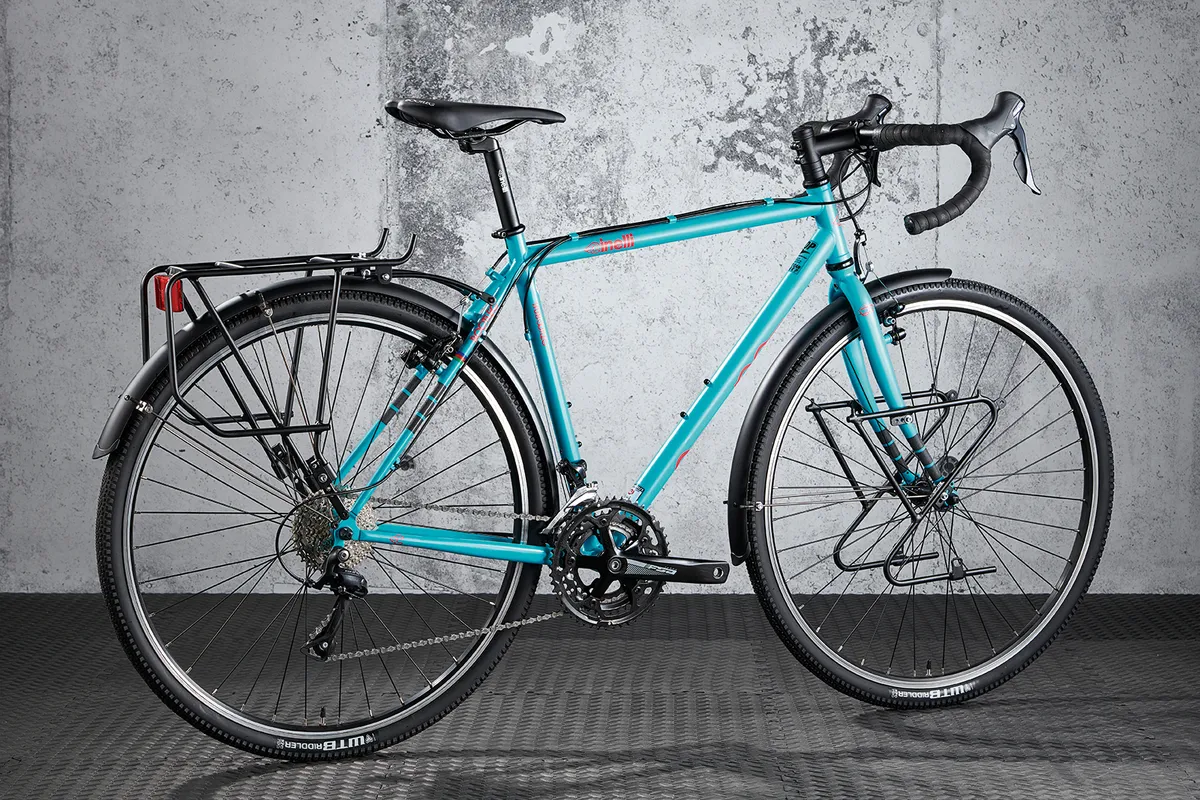
- £1,400 / $1,400 as tested
- Pros: Comfortable long-distance setup
- Cons: Cantilever brakes are more trouble to set up than V-brakes
The Hobootleg has been ridden around the world and over seven of the world's highest passes. Its steel frame comes with racks, a 50/39/30t FSA triple chainset and a corrosion-resistant paintjob.
The 9-speed Sora drivetrain has STI shifters, but the cantilever brakes seem a bit old-school in comparison to modern alternatives and need a lot of effort to get adequate stopping power. We liked the slightly flared Cinelli bars better though.
The bike comes with WTB Riddler 37mm tyres. They're more of a gravel bike tyre and don't roll that quickly on the road. However, the ride is lovely and loaded up you don't notice the 14kg weight.
What to look for in a touring bike
Panniers and bags
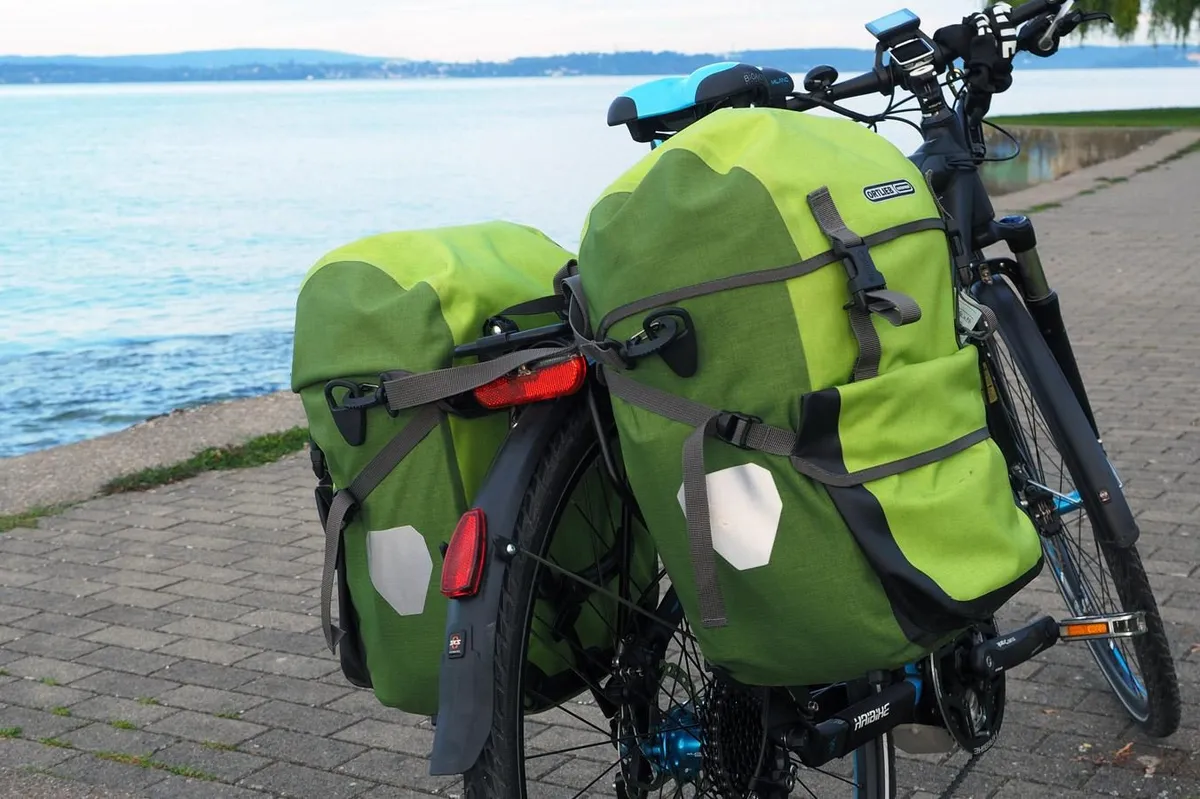
Now you’ve got a suitable bike, what else will you need to get started with touring?
Working out how you want to carry your gear is a good place to start.
Don’t be tempted to use a rucksack – it’ll just hurt your back and leave you with a damp, sweaty patch. Touring bikes are designed with carrying loads in mind, so get as much of it on there as you can.
A rear rack – which will come as stock on many touring bikes – and pannier bags are the most popular option. These can carry a large amount of kit and are easily removed from your bag. If you need additional storage, you can go for an extra front rack plus a handlebar bag.

Alternatively, you could go for a more modern approach with bikepacking bags, which typically strap the luggage straight to the frame, seatpost and handlebars.
This reduces weight and can improve handling in rough terrain.
Disc or rim brakes for a touring bike?
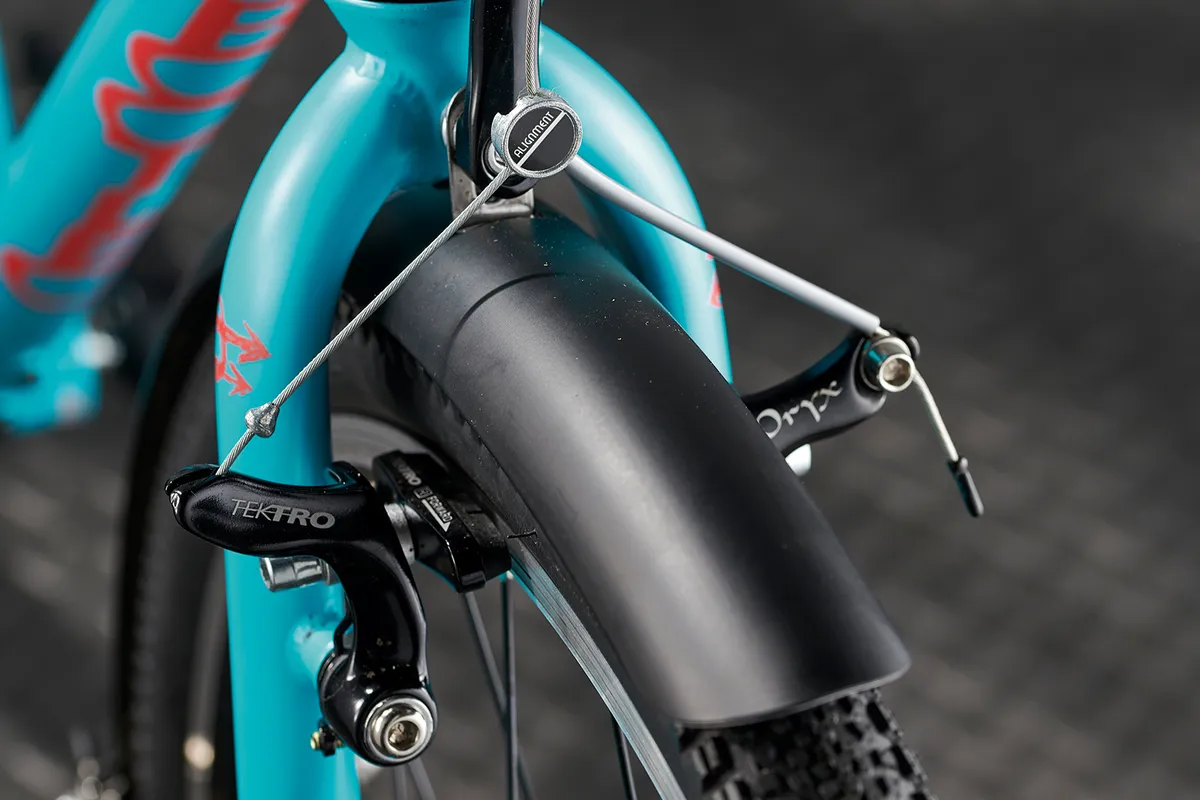
The vast majority of touring bikes will use disc brakes in place of the V-brake or cantilever brakes of old. Consequently, they will use disc-specific touring wheels, too.
Disc brakes offer superior braking power that – critically – is far more consistent in all weathers.
It is generally believed that the availability for spare parts for disc brakes is still slightly lacking in certain parts of the world compared to rim brakes. This is the only compelling case for continuing to use rim brakes.
Flat bar vs drop bar for a touring bike

There is no right or wrong handlebar setup for a touring bike. Some will prefer the upright position and extra control a flat bar will offer, while others prefer the additional hand positions and more aero position that is attainable with a drop bar.
Here, in the UK, our vision of the prototypical touring bike usually includes drop bars, so they are more commonly seen. In Europe, the opposite is true and flat bars rule the roost.
Experimentation is the key but, because touring bikes tend to have fairly upright geometry, it’s usually possible to swap between the two down the line if you find you’re unhappy with your setup (though to do so you would usually have to, at least, also swap your brake levers and shifters).
